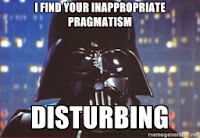It may take two to tango, but it takes four to CI...

One of the most common conversations that I have with clients is about continuous integration (CI) - the discipline of pulling together work done as often as possible, usually after code checkin to verify that the project is still on track (ie "it works"). So how many environments do you need in order to get real benefit from CI? Unfortunately the answer is a fuzzy "It depends...". But I always recommend at least 4 for safety/effectiveness. The good news is that if you do it right, downstream environments are relatively cheap to add as the need arises. (I have lost track of how many times I have drawn this diagram in various forms for clients, both in formal training and informal conversations. I am quite glad that I have finally managed to capture it onto one A4 sheet!) So what have we got here? Build & unit test This is the initial stage, normally triggered by a developer checking code into a version control system. It checks out the code ...


